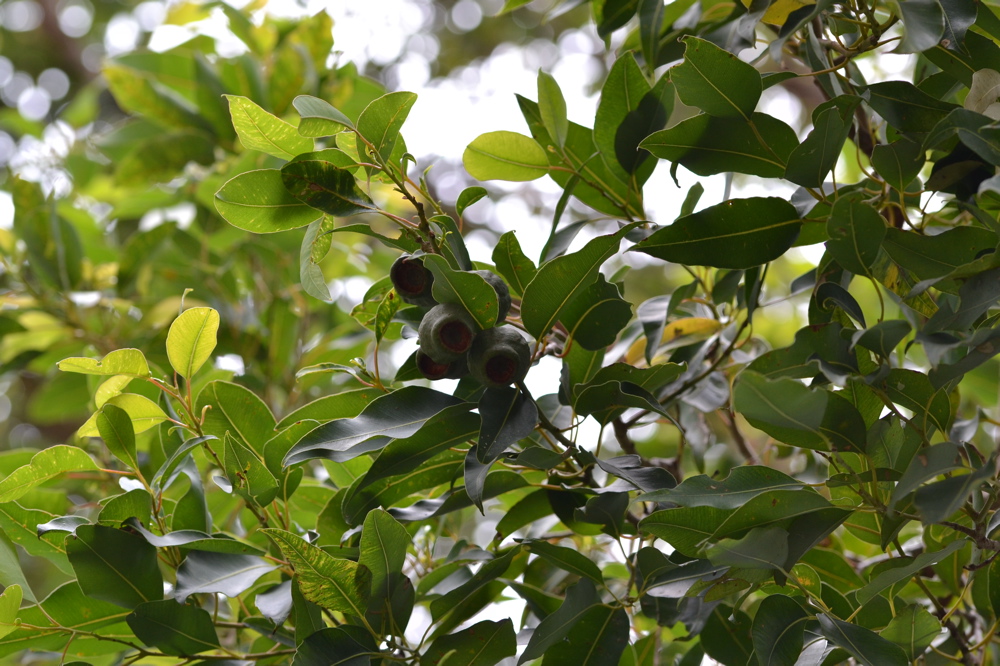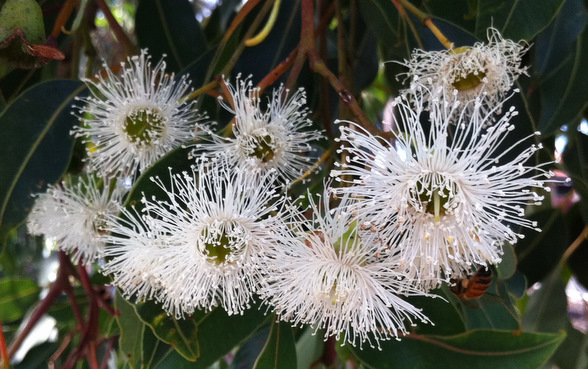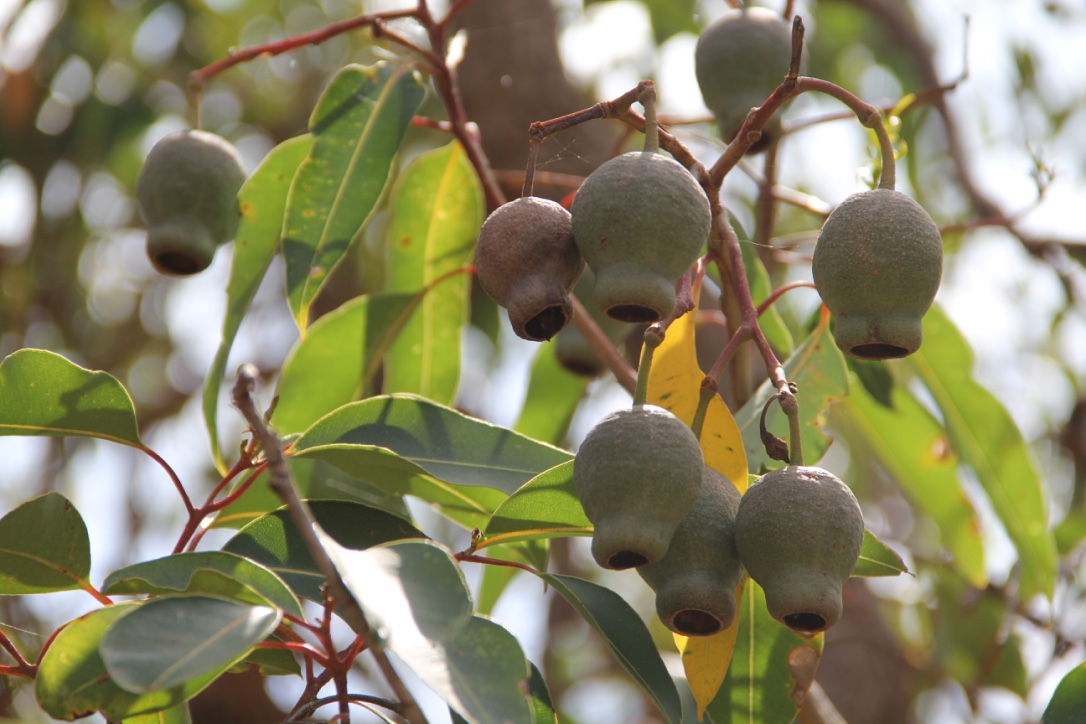Fruits/Seeds
Urn shaped fruit 0.7 – 1.4 cm long, 0.7 – 1 cm diameter.
Field Guide
Improve your identification skills. Download your Marri field guide here!
Corymbia comes from Latin (corymbium) a "corymb" refers to floral clusters where all flowers branch from the stem at different levels but ultimately terminate at about the same level and calophylla comes from Greek (calo) beautiful, and (phyllon) a leaf.
Large tree with tessellated bark, up to 40 – 60 m high.
Lance to oval shape. Veins are distinct.
White to pink.
Urn shaped fruit 0.7 – 1.4 cm long, 0.7 – 1 cm diameter.
Improve your identification skills. Download your Marri field guide here!

First fully open single flower
Full flowering (record all days)
End of flowering (when 95% of the flowers have faded)
No flowering


Marri is superficially similar to Red-flowering Gum (Corymbia ficifolia). However it has urn-shaped fruit rather than barrel shaped, its seeds are larger and do not have wings, and its oil glands in the leaves are prominent. C. ficifolia always has scarlet flowers, while marri flowers are almost always white.